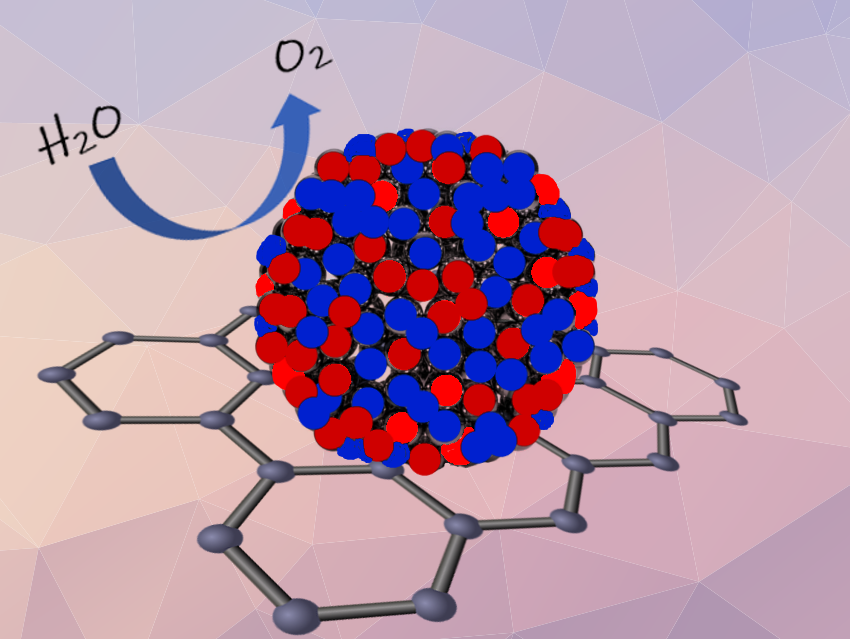The oxygen evolution reaction (OER) is a key process in many renewable energy conversion and storage devices, including metal-air batteries and water electrolyzers. One of the main challenges for these devices and mechanisms is finding electrocatalysts which have high enough efficiencies and stabilities in strongly acidic electrolytes.
Guihua Yu, Zhiwei Fang, Graeme Henkelman, Simon Humphrey and colleagues at University of Texas at Austin, USA, have developed rhodium-iridium (Rh-Ir) alloy nanoparticles with a diameter of less than 10 nm for use as acidic OER catalysts. The alloy nanoparticles were fabricated using a microwave-assisted polyol wet synthetic method before being isolated, placed on a nylon membrane, and dried under vacuum.
The OER activity was shown to have a volcano-shaped dependence towards the amount of Ir in the alloy. Alloys containing over 51 % Ir showed better OER activities than pure Ir nanoparticles. Rh22Ir78 nanoparticles were found to be the most effective catalyst with a mass activity of 1.17 A mg–1 at a 300 mV in 0.5 M H2SO4. These figures correspond to over a 3-fold increase in activity compared to pure Ir nanoparticles. Theoretical calculations have shown that the higher activity is due to a reduction in the binding energy of the oxygen intermediates compared to non-alloyed nanoparticles.
- Rational Design of Rhodium-Iridium Alloy Nanoparticles as Highly Active Catalysts for Acidic Oxygen Evolution,
Hongyu Guo, Zhiwei Fang, Hao Li, Desiree Fernandez, Graeme Henkelman, Simon M. Humphrey, Guihua Yu,
ACS Nano 2019.
https://doi.org/10.1021/acsnano.9b06244


